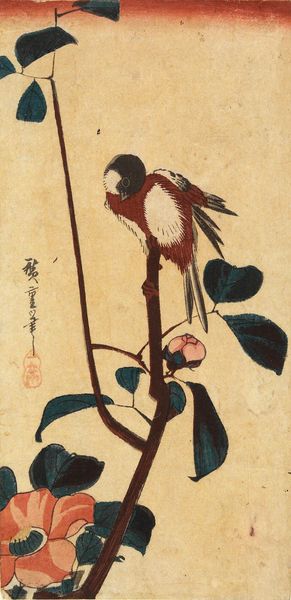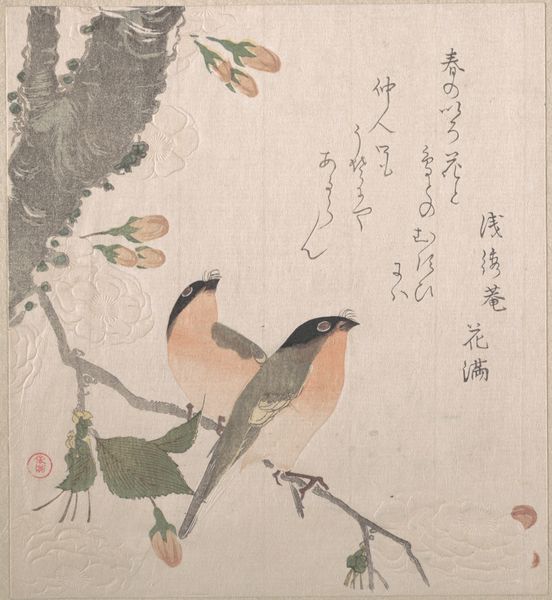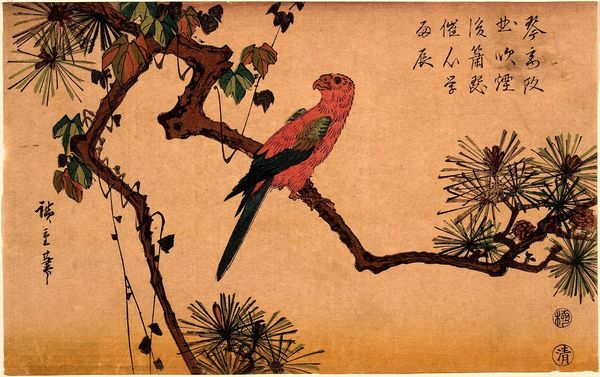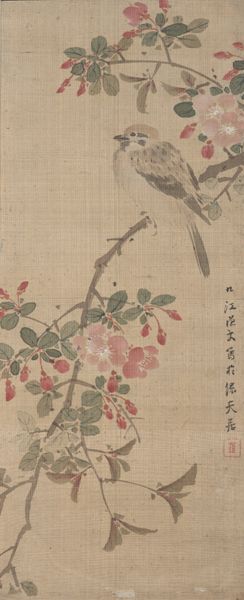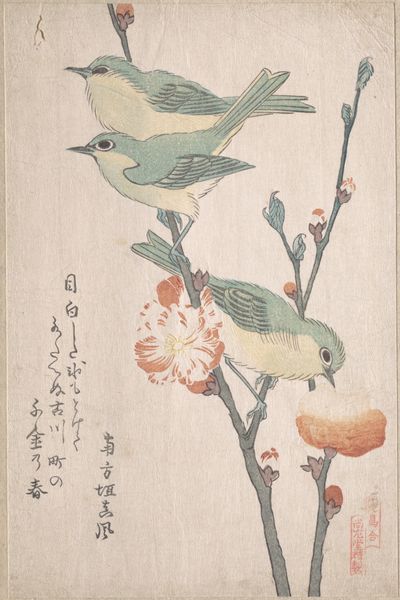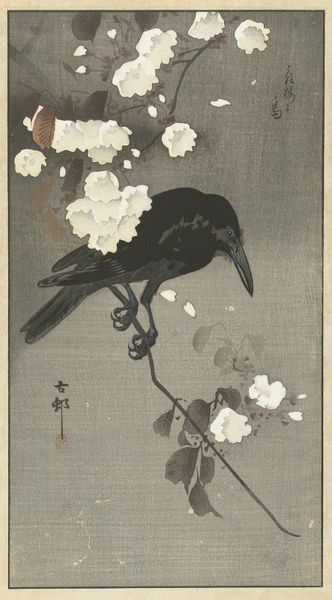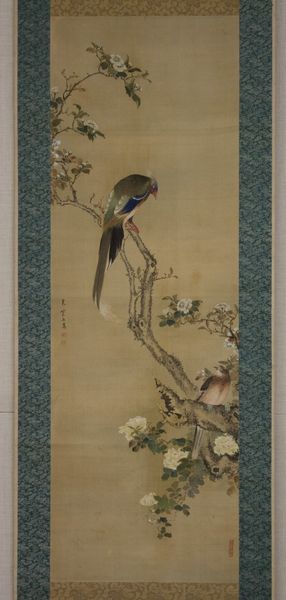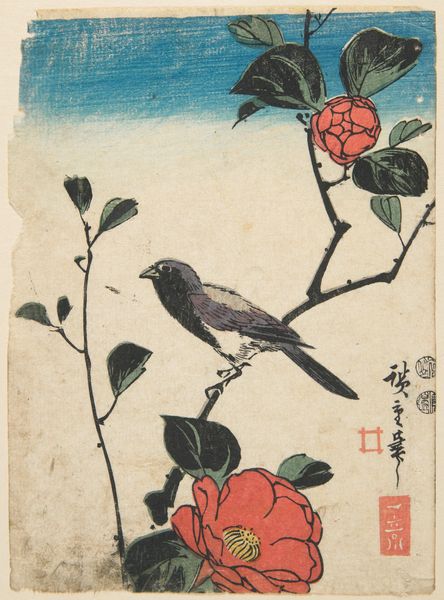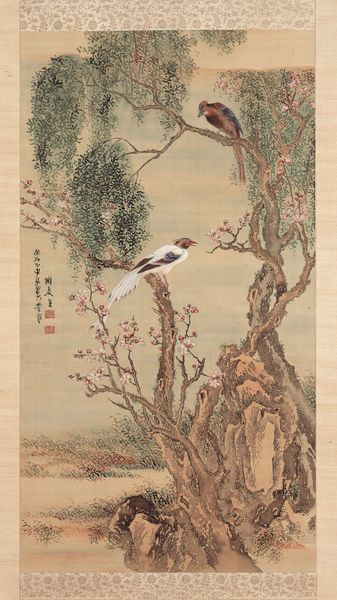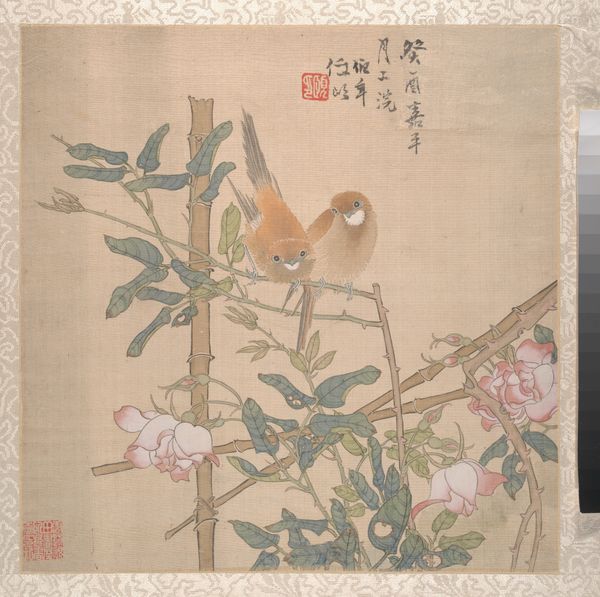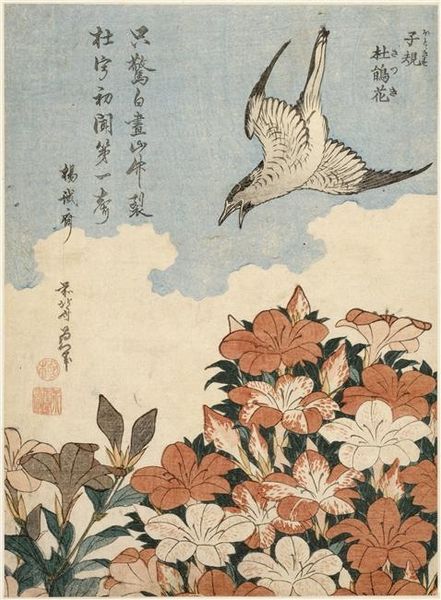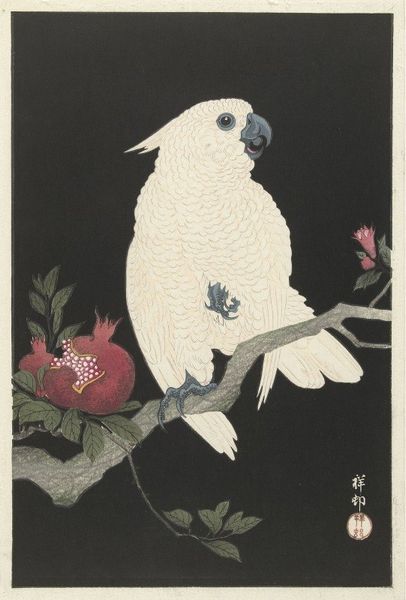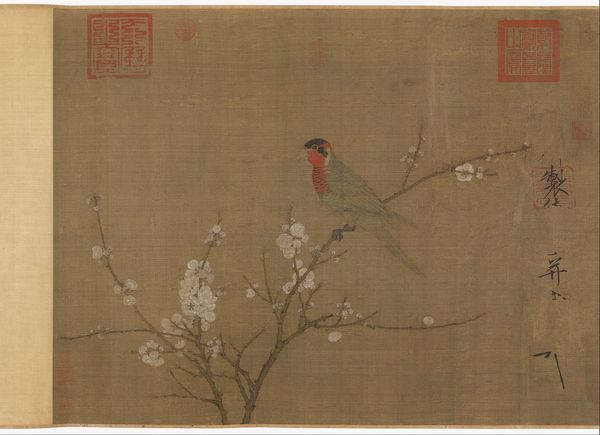
painting, watercolor
#
water colours
#
painting
#
asian-art
#
bird
#
figuration
#
form
#
watercolor
#
orientalism
#
line
#
watercolour illustration
#
botany
#
watercolor
#
realism
Copyright: Public domain
Curator: Up next we have "Pigeon on a Peach Branch," an early twelfth-century watercolor. Emperor Huizong, who was not only the eighth emperor of the Song dynasty, but also an accomplished artist himself, is credited with this work. Editor: Well, my initial impression is one of incredible serenity. The limited palette and the delicate rendering of the bird's feathers create a sense of tranquility and refined observation. The diagonal placement of the branch is also crucial. Curator: I see this piece as indicative of Huizong's attempt to legitimize his power through art and culture. As emperor, he promoted Daoism and positioned himself as a cultural arbiter, using art to represent an ordered, harmonious vision of his reign. Note how that seal functions to frame the composition on the upper right. Editor: The fine, controlled brushstrokes also reinforce that sense of order. The outlines define the forms, yet the gradations of color within them convey volume and texture. It is about line and a very subtle suggestion of tonal depth. Curator: Absolutely. Consider the symbolic value, too. The pigeon, in Chinese culture, can represent longevity and faithfulness. Paired with the peach blossoms, symbols of spring and renewal, we glimpse at imperial aspirations for an enduring dynasty. And, not incidentally, the naturalism shown is rooted in centuries of established traditions in Chinese art. Editor: But observe how the simplicity of the composition directs us to appreciate the inherent beauty of natural forms. The peach branch acts as a grounding mechanism to balance the weight of the bird form as well. Curator: Perhaps this delicate painting reveals a tension, even within the artist himself, between aestheticism and the demands of governance, where his artistic inclinations could serve both a political purpose and personal escape. Editor: For me, its beauty rests on the quiet visual vocabulary. From the texture of the bird’s plumage to the tender budding blossoms, we feel his love for the natural world translated into formal perfection. Curator: An important painting, culturally, and a keyhole through which we can observe both imperial power and the artistry of the man himself. Editor: Indeed, the image offers an enduring lesson about finding balance in form.
Comments
No comments
Be the first to comment and join the conversation on the ultimate creative platform.

